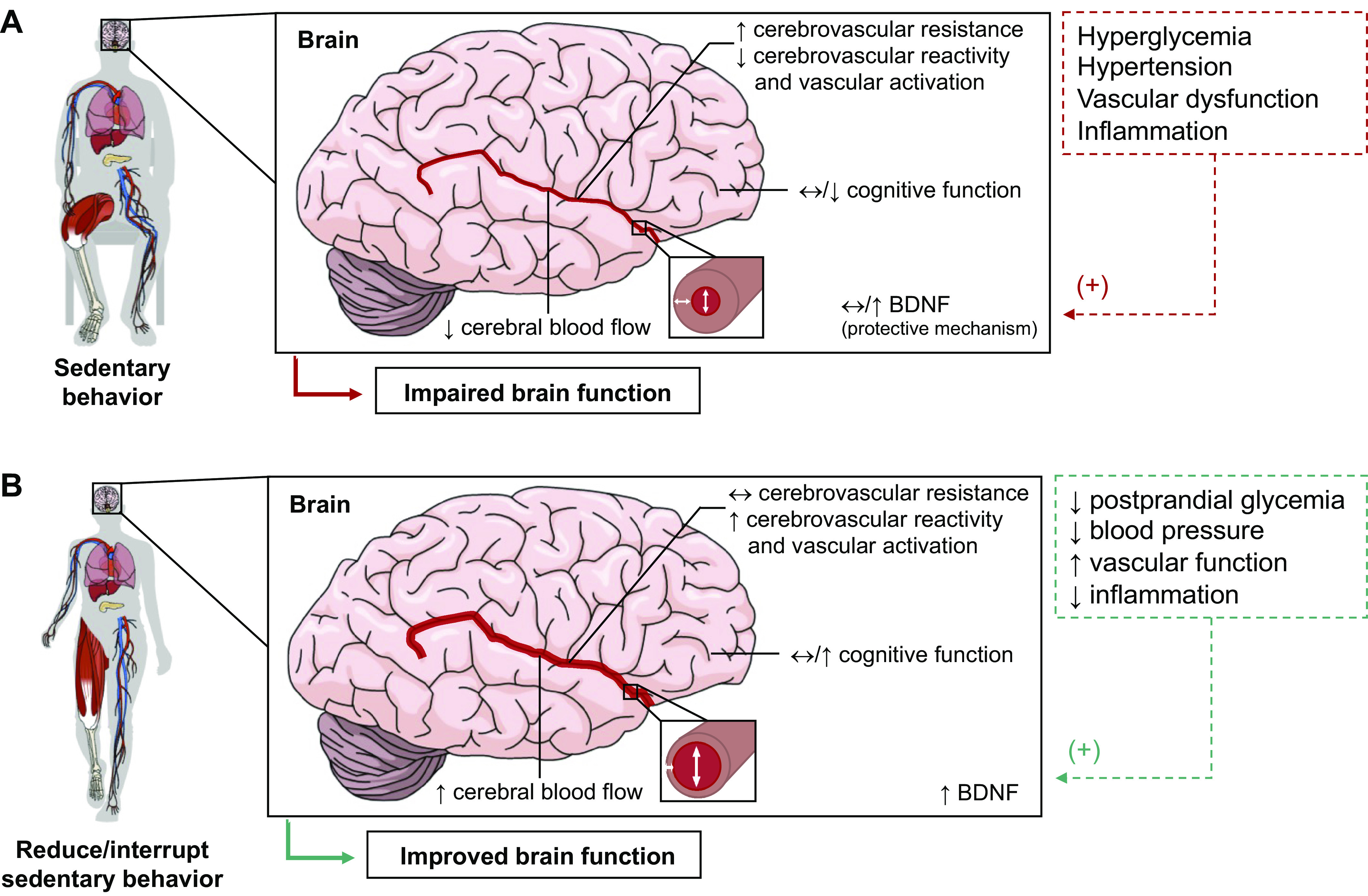FIGURE 7.

Cerebrovascular responses following exposures to prolonged sedentary behavior and to reducing/interrupting sedentary behavior. A: exposures to prolonged sedentary behavior may result in decreased cerebral blood flow velocity, cerebrovascular reactivity, and vascular activation and increased cerebrovascular resistance. Additionally, poor glucose control, vascular dysfunction, low-grade inflammation, and altered levels of neurotrophic biomarkers and their precursors/metabolites may further impair brain and central nervous system function. B: reducing/interrupting sedentary behaviors may be a potential strategy to attenuate sedentary behavior-induced maladaptations in the central nervous system function (41). BDNF, brain-derived neurotrophic factor. Image was created with mindthegraph.com, with permission.
